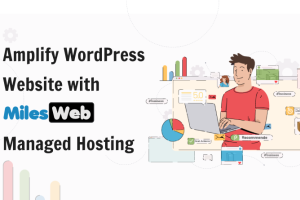It’s easy for business owners to lose their creativity over time due to the precedence of finishing common business tasks. Does that sound like you?
With the hustle and bustle of everyday business activities, it can be easy to forget about the long-term vision for your business.
But the best ideas are rooted in business innovation, idea testing, and idea research. Producing new business ideas to take your company to the next level should be constant and common activity at your business or firm.
When a business owner has a new idea for their business, it can be challenging to know where to start to be able to implement it properly.
In this article, we will walk you through everything you need to know about implementing your ideas in your business. We’ll give you seven steps to bring a new idea to life from concept to action.
1. Creating the Idea
Ultimately, to be able to take an idea from start to finish in your business processes, you’ll need to have an idea to start with! Ideation can and should be a dedicated activity for executives and leaders in your company.
This is because the market rewards innovation, and you will need to constantly work to improve your business to meet the market’s demands. The better you are able to do this, the more competitive advantage you will have.
For many entrepreneurs, ideation is the easiest step in the process. They are constantly thinking about how to make their business better.
However, if you struggle with the ideation step, go out to the market and talk to your customers directly. Oftentimes, they will be able to help you see blind spots you couldn’t see yourself. This way the ideas will flow.
2. Researching Your Idea
In a similar vein, you will need to validate and improve your idea with market research. This means taking steps to assess whether or not your idea will truly score as you or your customers think it will. The more evidence and expertise you can get behind your idea, the more valid and credible it will be.
Make sure not to fall into the classic trap of a data roadblock. It’s very easy to continue to seek or follow too many data points and become drowned in the information itself. Ultimately, there will come a point where you need to simply start and continue to do research as you go along.
3. Validation
Many people consider validation to be a part of the research process. However, it is often the most important and exciting part. It’s where the rubber meets the road and you will see if your customers truly respond to your new ideas.
Is your audience truly excited about this idea? You also want to know if it meets a specific need that they have.
You can get this information in a variety of ways. If you already have an existing audience like an email list or onboard focus group, you can reach out to them directly. However, you may need to reach out with a special reward survey or simply a coffee date with a few primary customers in exchange for their feedback.
4. Mapping out Your Plan
Once you’ve gone through the research and validation stages, your idea has been proven and you simply need to work to implement it.
The best way to go about implementing a new idea in your business is to reverse engineer it for success. This means that you will start with the end result that you desire, and then work backward to figure out what steps are needed to get there in the shortest way possible.
This helps you cover all the bases needed to build a reasonable timeline and process for bringing your idea to life.
Many people start by writing this process out on paper and then shift to a digital solution to track the multiple steps in the implementation process. We like https://setapp.com/how-to/best-mind-mapping-software for a digital solution.
5. Launching the Idea
Now that you have your final project roadmap, it’s time to bring your project to life. There are no excuses at this point. It’s time to implement action and get things done.
If you want to ensure success, make sure to include time in your day every day during the implementation. To ensure things are going smoothly. You can demonstrate your commitment to the project simply by allocating time to help it grow.
This is the primary mistake that many business owners will make. They get excited about the process and potential results but aren’t willing to take time out of their day to see it through. Don’t make this mistake, and instead focus on taking your project across the finish line every day until you see results.
6. Evaluate the Process
The other major mistake that many business owners make is not evaluating their process for improvement. Oftentimes, these new business ideas take up significant time, energy, and resources. Many business owners do not want to continue to invest in improving this idea once it is hit the market.
Other business owners will lose interest in the process because their launch wasn’t as wildly successful as they wanted. However, smarter business owners recognize that new ideas will continue to need tweaking and optimization before maximal results come.
When you evaluate the project, you’ll learn whether or not you need to strengthen the content, certain aspects of the approach, or adjust the fit to the local market. You may also need to add a promotional strategy that really helps the project take off.
7. Optimization
Taking the results and information you have from your evaluation stage, it’s time to make tweaks to optimize over time. This can be in the wake of a launch, but it can also be many years down the road.
The ideas you come up with in your innovation systems can become the pillars of your business, and optimization over years is the best way to put distance between you and your competitors.
You can also work to bring your idea to the market in a more efficient and cost-effective way. This is one of the best ways to improve your bottom line as a business.
Bringing a New Idea to Life
At the end of the day, bringing a new idea to life in your business is simpler than it sounds. It simply requires commitment. With sufficient research, validation, and planning, you can see great results in just a few weeks of work.
The smartest business owners will continue to evaluate and optimize their ideas for efficiency and maximal results over time.
If you enjoyed this article about business innovation, please check out the other articles on our blog!














